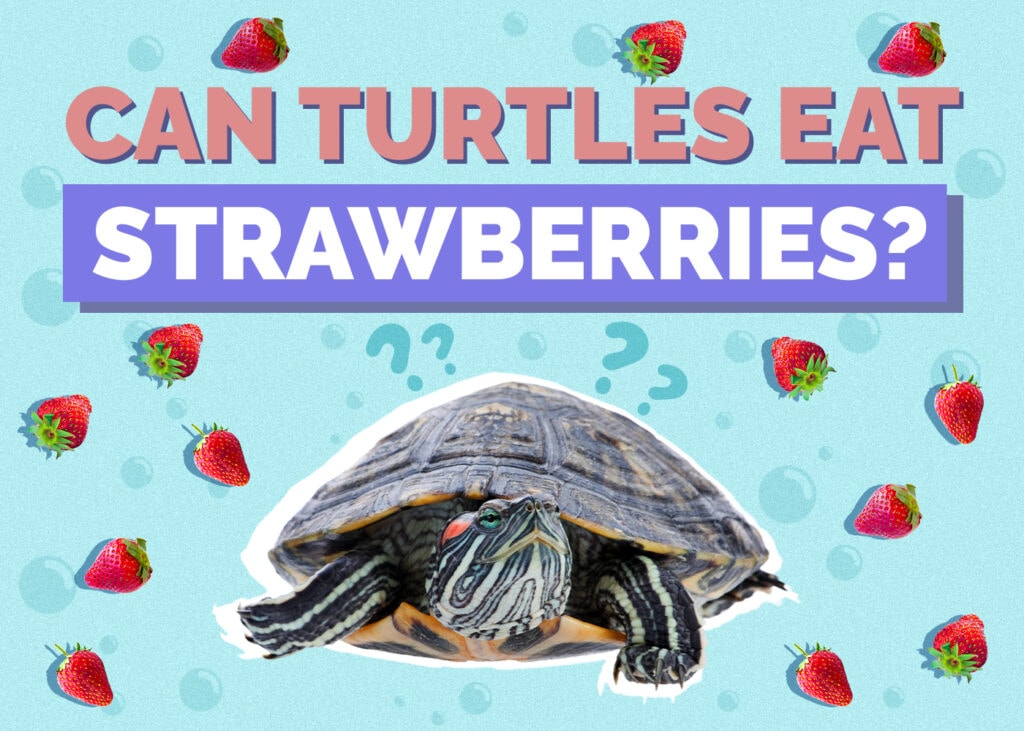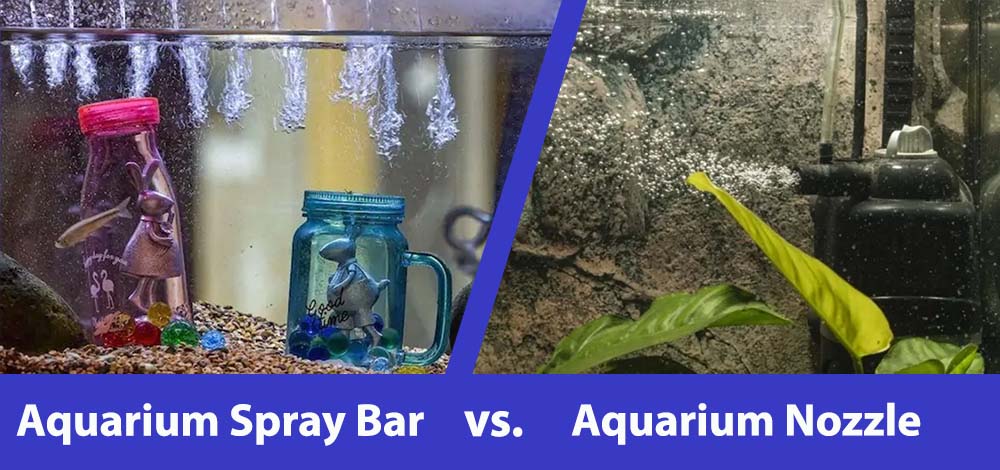Can Turtles Eat Strawberries? Nutrition Facts & FAQ
Updated on

Yes, strawberries are safe for most turtles from time to time. They contain a wide variety of nutrients, including vitamin C, potassium, folic acid, and fiber. Therefore, they do provide several benefits for your turtle.
However, strawberries also contain a lot of sugar. Therefore, they’re most useful when fed as treats, not as part of their regular diet. You should also wash the strawberries well before feeding them to your turtle, as many strawberries contain pesticides.
With that said, different species of turtles have different dietary needs. You should always research your specific turtle before feeding them strawberries, as not all turtles will benefit from eating strawberries.
For example, box turtles and Russian tortoises are mostly plant-eaters and can enjoy strawberries as a treat once in a while 1. Aquatic turtles are more omnivorous and need more animal protein in their diet, so they may not benefit from strawberries as much.
How Many Strawberries Should I Give My Turtle?
Strawberries should be considered a treat—not a snack or meal. They should never replace your turtle’s actual food.
However, exactly how many strawberries your turtle can have depends on their size and species. Very big turtles may be able to eat one or two strawberries, while smaller turtles may not even be able to handle a whole strawberry.
No turtle is going to eat a whole pack of strawberries from the store before they go bad. Therefore, you’ll need to either eat the strawberries yourself or choose plain, frozen strawberries instead.

What Kinds of Strawberries Can Turtles Eat?
Turtles can eat any type of strawberry as long as it doesn’t contain any added ingredients. Many frozen and canned strawberries contain sugar, and other added ingredients that turtles can’t have. Even if something looks like plain strawberries, you should always check the ingredient list to ensure that it is. Otherwise, you may accidentally feed your turtle something that isn’t good for them.
Beyond that, all species and forms of strawberries are okay.
Can Turtles Eat Strawberry Leaves?
Turtles can eat young strawberry leaves. However, they shouldn’t eat the older leaves.
When a strawberry is picked, the plant’s leaves release hydrogen cyanide, which is extremely toxic. This helps deter pests and even kills bugs and smaller animals. The leaves hold onto the hydrogen cyanide for some time, though. Therefore, leaves that are picked are often toxic.
Younger leaves produce less hydrogen cyanide than older leaves. However, all of the leaves do produce it to some extent. While many experts agree that younger leaves can often be consumed without a problem, many people decide to play it safe and feed no leaves to their turtles.
In the end, it’s mostly up to you. Just don’t feed the older leaves, as they are likely much more toxic than the younger ones.

Potential Downsides of Strawberries for Turtles
While strawberries are often considered a rather healthy treat, this isn’t always the case for our turtles. There are several reasons strawberries should be a treat only and not make up a huge portion of your turtle’s diet.
Strawberries contain a lot of sugar. While a little bit of sugar is fine for most turtles, it isn’t something that they should eat a lot of. Large amounts of sugar can cause digestive problems and even obesity when fed long-term. Sugar is something you should restrict your turtle’s access to, which means limiting the amount of fruit they consume.
Strawberries often contain high levels of pesticides. They’re well-loved by many insects, so farmers often have to use lots of pesticides to keep them at bay. Furthermore, strawberries have a soft skin that’s typically eaten. We don’t peel strawberries like we do other fruits. Therefore, we tend to eat all the leftover pesticides. Pesticides affect small pets like turtles more than people. It’s vital to wash your turtle’s strawberries thoroughly to remove as much of the pesticides as possible.
Potential Benefits of Strawberries for Turtles
There are also several potential benefits of your turtle eating strawberries. These benefits won’t have a huge impact on your turtle’s health, as your turtle can’t eat that many strawberries due to the potential downsides.
- Vitamin C: All turtles need vitamin C from their diet. It’s an important antioxidant that can boost the immune system and keep your turtle healthy. Most fruits and veggies contain vitamin C, which is why they’re often recommended for your turtle’s diet.
- Vitamin A: Turtles rely on vitamin A to keep their respiratory system healthy. Without it, your turtle can develop health issues due to malnutrition. A lot can be said about turtles and vitamin A. However, for now, it’s enough for you to know that strawberries are surprisingly high in this helpful vitamin.
- Calcium: Strawberries aren’t something you may consider to be high in calcium. However, they absolutely are, especially when compared to other fruits and veggies. This mineral is vital to help your turtle’s shell harden, which is quite important.

Are There Any Turtles That Shouldn’t Eat Strawberries?
Yes, there are some turtles that should not eat strawberries.
For example, desert tortoises should not be fed strawberries as they can cause digestive issues. They have adapted to a low-sugar diet that consists mainly of grasses and other plants. (They live in the desert, after all.) Strawberries are too sweet and acidic for them and can upset their stomachs.
Similarly, aquatic turtles such as red-eared sliders should not eat strawberries either. They are omnivores and need a diet that is rich in protein and calcium. Strawberries do not contain the nutrients that aquatic turtles need to maintain a healthy diet. Instead, they should be fed a diet containing animal-derived foods such as worms, fish, and insects.
There are other species that shouldn’t eat strawberries, as well. It’s important to research your particular turtle to determine what their diet should look like before feeding them strawberries.
With that said, most turtles that are herbivores should be able to consume strawberries in moderation.
How to Feed Strawberries to Your Turtle
Feeding strawberries to your turtle isn’t challenging, but there are a few guidelines you should keep in mind:
- Soak the strawberries. First, you should soak the strawberries in a mixture of water and baking soda. This helps remove the pesticides on the berries, making them safer for your turtle. Use cold water and add one teaspoon of baking soda per cup of water.
- Rinse the strawberries. After the soak, rinse the strawberries to remove any excessive pesticides and leftover baking soda. Scrubbing them with a fruit brush can help reduce any trace chemicals.
- Chop the strawberries. The strawberries should be in smaller pieces to ensure they’re edible for your turtle. You don’t want them to be a choking hazard. You can either add the strawberries to your turtle’s usual eating place or hand-feed them for some extra bonding time.
- Monitor your turtle. While many species can consume strawberries, some individuals simply don’t mix with strawberries. They may have stomach upset or digestive issues afterward. In these cases, it’s best to discontinue strawberries from your turtle’s diet.
Conclusion
Most types of turtles can consume strawberries without much of a problem as long as you provide them in moderation. However, other turtles should not be given strawberries. It largely depends on the diet the turtles were adapted to eat. Those that cannot consume very sugary foods shouldn’t eat strawberries.
For turtles that can eat strawberries, they can be a very yummy treat. Furthermore, they contain a range of different nutrients that are beneficial for your turtle.
However, not everything about strawberries is good. They are very high in sugar, which can cause all sorts of digestive problems for your turtle. Therefore, moderation is key.
Featured Image Credit: Jacek Dylag, Unsplash











